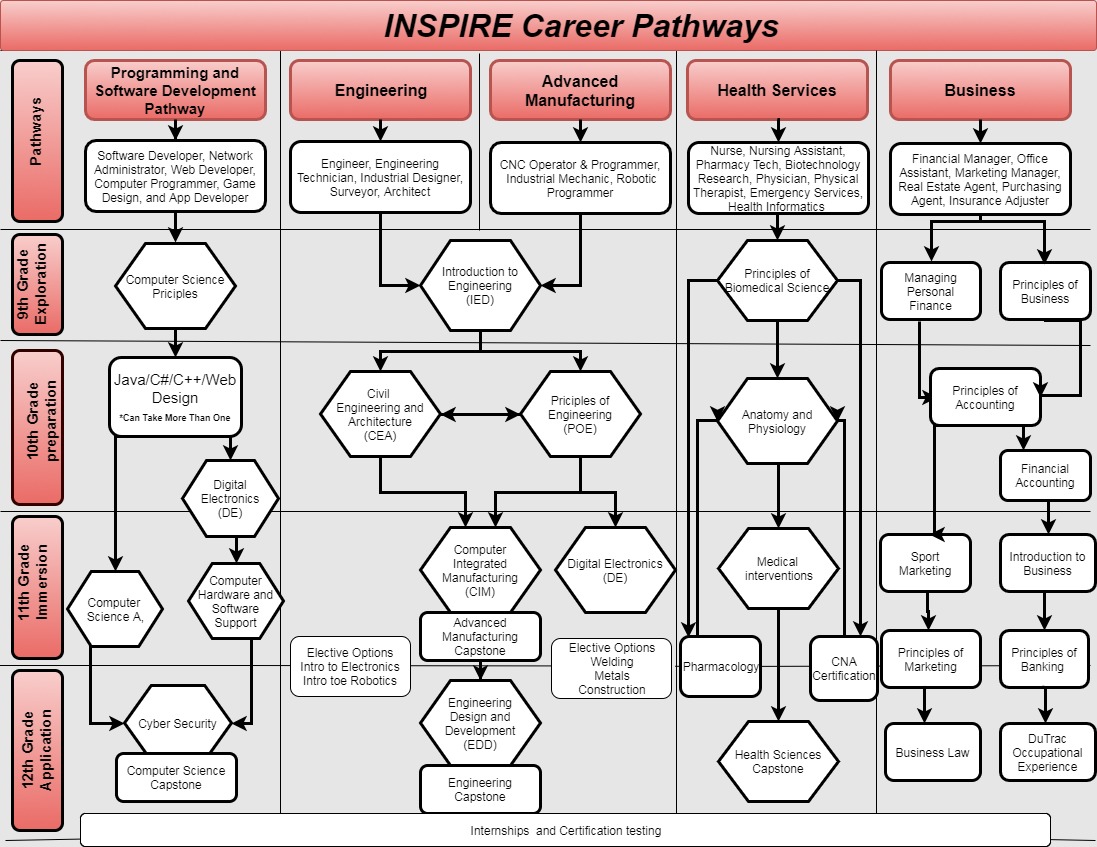Advanced Manufacturing
Introduction to Engineering Design
Students dig deep into the engineering design process, applying math, science, and engineering standards to hands-on projects like designing a new toy or improving an existing product.
Principles of Engineering
Students explore a broad range of engineering topics including mechanisms, strength of structure and materials, and automation, and then they apply what they know to take on challenges like designing a self-powered car.
Civil Engineering and Architecture
Students learn important aspects of building and site design and development, and then they apply what they know to design a commercial building.
Computer Integrated Manufacturing
Students discover and explore manufacturing processes, product design, robotics, and automation, and then they apply what they have learned to design solutions for real-world manufacturing problems.

Digital Electronics
Students explore the foundations of computing by engaging in circuit design processes to create combinational logic and sequential logic (memory) as electrical engineers do in industry.
Engineering Design and Development
Students identify a real-world challenge and then research, design, and test a solution, ultimately presenting their unique solutions to a panel of engineers.